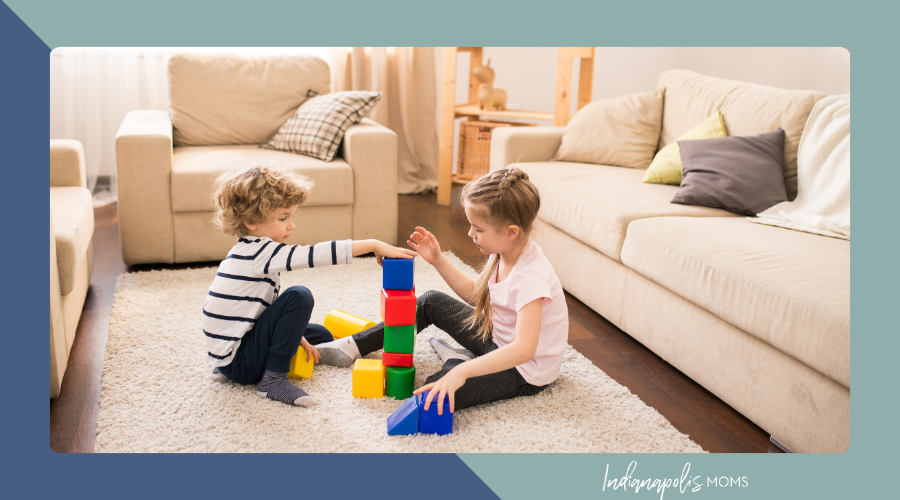 Time for a quiz.
Time for a quiz.
You are standing in the kitchen preparing lunches for the next school day when, like a hurricane, your child flies into the room, almost knocking you over, complaining that a sibling just committed a random act of injustice. Do you…
A. Say, “Quit tattling and figure it out on their own.”
B. Explain that if you get involved, neither sibling will like the solution.
C. Say, “It’s okay, Mama will make it better.”
D. Make a cup of coffee and ignore it because it’s the 37th time today you’ve heard someone tattle.
If you have a child, work with children, or have even just seen a child, you have likely witnessed tattletailing. Not gonna lie; It’s a hot button, and I never found a successful way to deal with it… until now. As a former kindergarten teacher, I was far more patient with the informants I found flocked around my feet. But at home? It was a different story:
Them: ”Mom! She’s…”
Me cutting my child off mid-sentence: “Are you bleeding, barfing, or on fire? No? Then, move along.”
Them: Stomp-off-eye-roll-harumph combo
Me: ignore
Them: Escalation, screaming, fighting, tears
Me: Lose it from three rooms away, hurling empty threats upon which I have no energy to follow through
Rinse and repeat every few hours for the rest of my life.
Sound familiar? Kids are kids, and tattling seems ingrained in their DNA. It wasn’t until I started studying the power of positive intent that I began to tackle tattling in a different way. All behavior is a form of communication. All of it. Tattling too. When I assign the principles of positive intent, I’m disconnecting the child from the behavior, and thus, I can dive into the function of that behavior, or the why. What does that mean?
Kids who are tattling are likely in an emotional state. They are seeking connection. In this state, children cannot tap into their inner genius, so they are rightly coming to us to fill their executive functioning gaps. When we brush off our kids mid-problem (see Me, above), we are not helping them access the skills they need. Therefore, the next time they have a problem, guess what? Yep, they are right back at our feet seeking help. How do we make it right?
As adults, we need to be regulated. So pause, breathe, and check your mindset (positive intent: this child needs my help, not this child is annoying and can’t figure anything out on their own). Next, get the other child(ren) involved. If someone is hurt – either physically or emotionally – attend to the “victim” first.
Then, we start teaching. Instead of, “Sounds like you were being a real jerk to your sister up there. How’d you like it if someone did that to you?” Remove the judgment to allow for de-escalation and cooperation. Notice and state a behavior, and then, using positive intent, show the child you understand there was a mistake. It might sound like this, “You were really hoping to have the Barbie car your sister had, so you pushed her. You didn’t know what else to do when she wouldn’t share.”
From there, set a boundary with your family’s rules or expectations and teach how to resolve in the future, “You were really hoping to have the Barbie car your sister had, so you pushed her. You didn’t know what else to do when she wouldn’t share. You may not push other people. Pushing hurts. If you want to share in the future, ask your sister to give you a turn after she has a turn.” Encouraging the other child to help problem-solve possible solutions will promote independent thinking when a sharing issue arises again.
If you’re doubting, I get it. I, too, was a doubter. The key here is teaching new skills. Kids who hit or push or bite or exhibit any challenging behavior are telling us they do not have the skills to solve an issue any other way. We must teach them, and it takes time.
What about the bigger kids? In the absence of a real physical emergency, it’s important to ask the child who’s tattling, “Are you being helpful or hurtful?” This will help both you and the child identify if this is a “revenge” tattle. A classic scenario: I send the girls to clean their room before going outside to play. One comes downstairs, “She’s not cleaning! I’m doing everything on my own.” I ask, “Are you being helpful or hurtful?” Initially, I heard “helpful” because my girls thought they were helping ME discover someone was not listening. The teaching comes in the realization that ultimately they are looking to get their sibling in trouble or are mad that they are not getting what they want. I can help give them the words and problem-solving skills to work through it together. “Your sister would really like some help cleaning up. How can we work together?” Ideas start flowing. Put on music, make it a game, divide the room in half. The key is that the girls are practicing the tools I’m lending them so they won’t always need my intervention.
Of course, there are also victim tattling situations. “She’s touching me!” In her book, Conscious Discipline, Building Resilient Classrooms, Dr. Becky A. Bailey encourages adults to ask children in victim tattling, “Did you like it?” When I first used this at home, my seven-year-old looked at me like I had three heads. Of course, she didn’t like it, but asking her served a few purposes. It made her stop and think long enough to break the spiraling, and it helped her find her assertive voice:
“She’s bossing me!”
“Did you like it?”
”No!”
”So tell your friend, ‘Stop, I do not like it when you talk to me in a bossy voice. Use kind words instead.’”
It takes practice and patience, but teaching kids the tools to problem solve without tattling IS possible.
Now we can finish our quiz:
E. Take a deep breath and teach tools your child can use next time.
Please give it a go. And then try it again and again. It just might save you and your tattletale from a little trauma.








